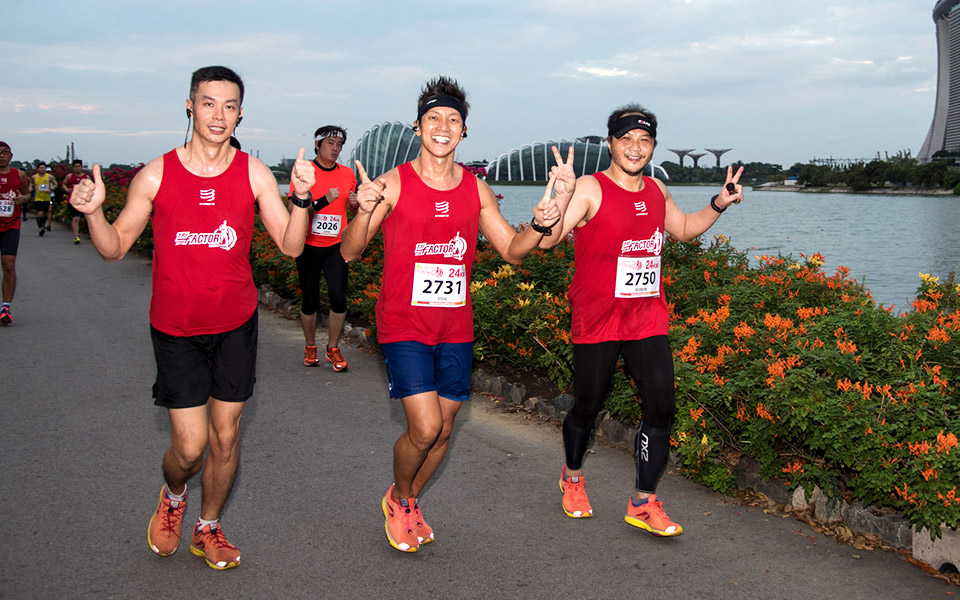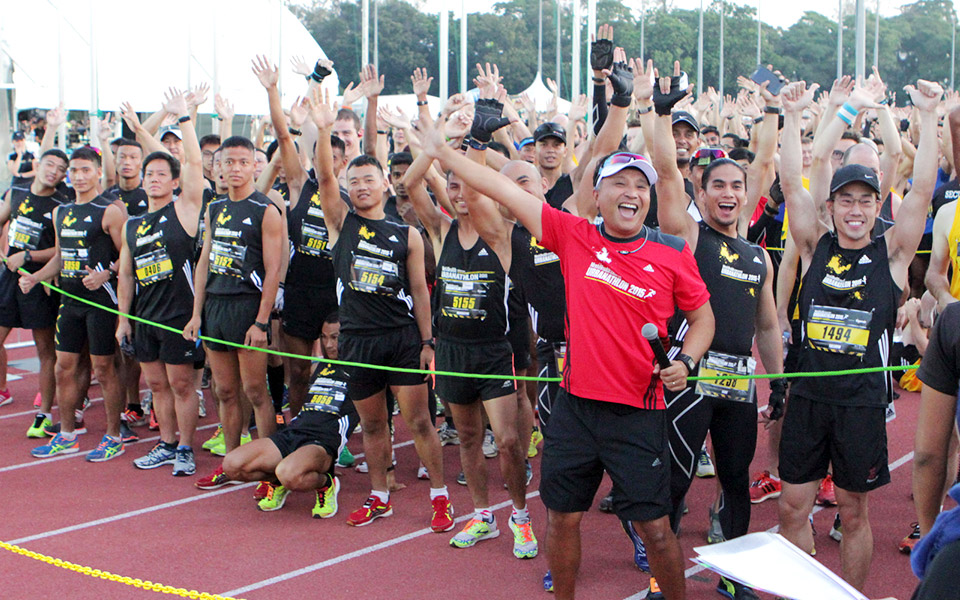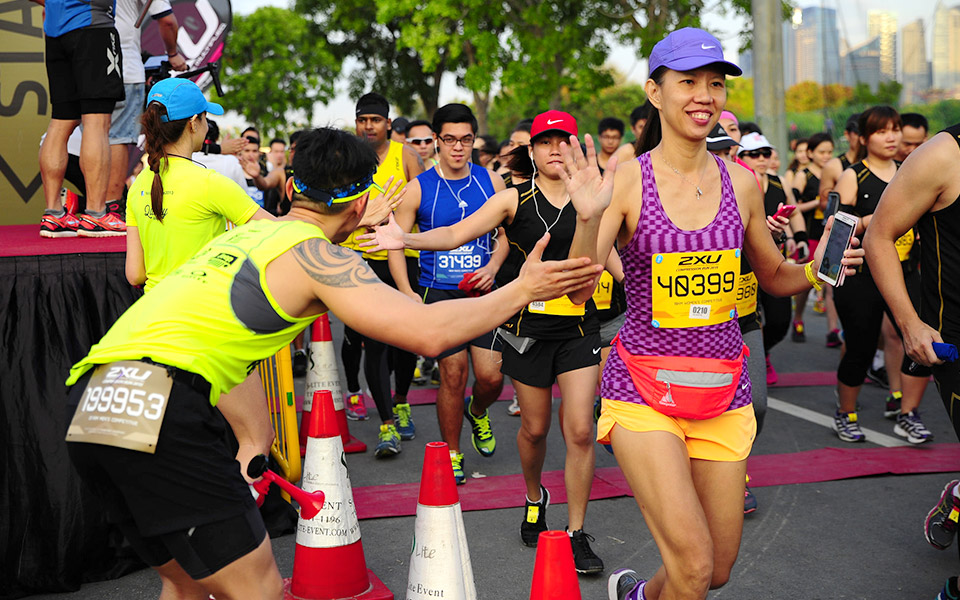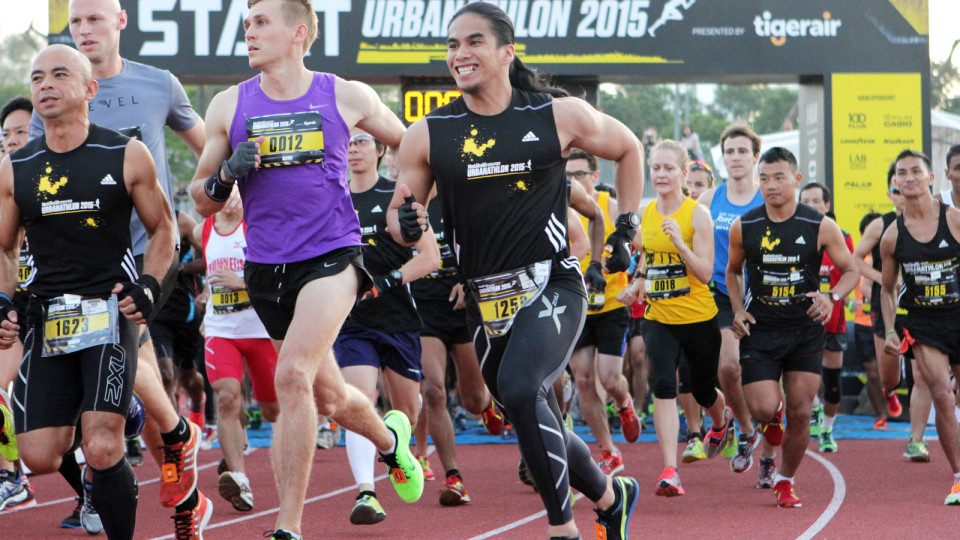If only we had a crystal ball and could peer into the future of Singapore running, everyone would benefit! But with no crystal ball at our disposal, the best way to analyse the future of this popular sport is to use human behaviour, past history and trends associated with the sport to make educated guesses.
Will the Singapore running scene change over time? Of course it will—because everything on the planet evolves—but whether that evolution will have positive or negative implications is the reason behind this speculative inquiry.
History of Singapore Running Industry
According to EvoStudies.org, there is enough archaeological and anecdotal evidence available to suggest that early man would have considered a 42.195 kilometres run to be an extremely foolish undertaking on multiple counts. Sustaining such a pace is counterproductive in everyday life and undertaking arduous distances isn’t instinctual behaviour for humans—even early hominids who had plenty of reason to master sprinting to avoid being eaten by prehistoric creatures!
Over time, when humans stopped migrating and settled down, people had fewer reasons to run for anything more than safety and emergencies—until man’s eternal need to compete against himself and others evolved into the first races.
Blame the Greeks, if you like, for insinuating running competitions into society when they began hosting the Olympic competitions usually referenced when discussing the evolution of competitive running. Such inter-society races were effortless to stage because no equipment was necessary—not even shoes—and eventually, running became institutionalised, evolving into an industry known as track and field.
The development of running as an industry in Singapore isn’t a long one, but it’s no less impressive, as this timeline proves:
- 1920s: Singaporeans adopt running exercises to get outside more and stay healthy.
- 1930s: The Singapore Athletic Association is instituted to promote athletic endeavours.
- 1950s: Singaporeans resume their interest in running post-war, though few could afford running attire.
- 1960s: Singapore’s government began allocating natural space for running. There was a National Service directive to take up running “in defense of the homeland”.
- 1970s: East Coast Park was opened to host runners. The Army replaced fitness exams with a 2.4 km run.
- 1980s: The nation’s first Singapore International Marathon and vertical events were staged.
- 1990s: Singapore runners enjoy new green space and park connectors thanks to government initiatives.
- 2000s: Both RunSociety and the SportCares community service organisation were launched as the number of running events hosted by Singapore grew by leaps and bounds.
Why Do Singaporeans Love to Run?
When author Derek Sivers began writing his book about Singapore, he sought to understand the culture’s drive and social perspective as it relates to the tempo and rhythm of everyday life. His book paints a picture of a society with a proud, diverse heritage, but the nation lacked natural resources and industry in its earliest days as a nation. As a result, Singaporeans developed a focused, pragmatic, nationalistic attitude toward all aspects of life. This society was collectively determined to thrive and so it has.
So how does Singapore’s struggle for existence as an independent nation relate to the sport of running? Simple. One is a metaphor for the other. It takes no psychology degree to recognise that Singapore’s collective drive, vision, discipline and determination are synchronistic matches for the sport of running, thus what started out as a pleasurable way to get exercise has impacted all strata of society. Stroll in any green space on Sunday in Singapore and see thousands of people engaging in a sport that’s become a passion—and in some cases, a mission.

Can This Passion Survive and Thrive Over Time?
Is Singapore’s fixation with running doomed to burn out? That depends upon whom you ask. From 30-somethings who have grown up running and competing at school, to 60-somethings who are still challenging themselves to finish marathons, enculturation is a powerful drive, but on the other side of the coin, Singapore’s highly-driven culture could face “burn out” as a natural result of “too many races” to sustain the public’s appetite.
Added to the potential for burnout is a proliferation of running events that multiply from year to year. Social scientists have proven that when confronted with more than seven choices, people have trouble making decisions, and since it’s possible to post 52-weeks’ worth of conditioning, training and racing on a running calendar, this immersion has the potential to consume one’s life, which can then lead to sports fatigue.
An additional reason to be concerned about the future of running in Singapore relates to the quality and intentions of organisers showing up on the running scene in Singapore and throughout the Pacific Rim. Fly-by-night organisations and individuals out to make a quick buck have the potential to taint the industry, casting a long shadow on even the most reputable of sponsoring entities. Athletes suffering negative experiences after participating in badly-managed events have more reason than most to abandon running for another sport.
We would be remiss if we didn’t mention environmental factors that can impact Singapore runners. The National Environment Agency has stepped up its efforts to track air quality, thus a runner can go to their website for Pollutant Standards Index (PSI) numbers that trigger “haze” warnings.
What is a committed runner to do when PSI levels rise on marathon day or as an interrupter of a critical training schedule? This dilemma poses a serious health threat that may be out of the control of athletes, but the haze has the potential to dramatically impact the future of Singapore running.

There’s also an economic price to pay by becoming entrenched in Singapore’s running scene. Entry fees for competitions can add up and budget-busting travel expenses plus housing and meals can quickly eat up disposable income. Factor in pricey running shoes, attire—and for techies, all manner of gadgets and gimmicks that range from smart watches to equipment—and you’re looking at just tip of this expensive iceberg.
A final factor in the equation is global economic downturn. After the disastrous 2008 global financial debacle, Singapore became the first Asian nation to slip into recession. Things remain tenuous. In July 2015, financial analysts at Bloomberg wrote,
“Singapore is the closest thing Asia has to an economic barometer. Its highly open, trade-reliant economy usually signals when trouble is approaching the global stage. And at the moment, Singapore is flashing clear warning signs.”
A nation in economic decline could seriously disrupt the status quo: if runners lose their jobs, corporations stop underwriting competitions and it simply becomes impossible to sustain the industry, it’s not hard to imagine a negative outcome.
Why Singapore Running is Likely to Have a Bright Future
Having undertaken the aforementioned litany of reasons the Singapore running scene could diminish despite its present popularity, there is much to celebrate about the current state of the sport to support a more optimistic view of the future.
Few nations are as supportive of running endeavours as Singapore, where government, corporations and organisations collaborate to support all aspects of the sport. All one needs to do is consider the topography of a small, crowded nation like Singapore to appreciate the amount of running space carved out by a government exclusively for the health and welfare of citizens.
Further, corporations contribute mightily to Singapore’s running scene by allocating large sums of money each year to underwriting races and marathons that have been around for so many years, some are becoming traditions and institutions in their own right. Sure, these companies have self-promotional motives, but nobody requires them to build in-house gyms, give employees time off for competitions and provide incentives that encourage participation.
Finally, this discussion begs the question: Given the important role in society that running has assumed in Singapore, what could possibly take its place in the minds and hearts of those who rely upon all aspects of running to add meaning to their lives?

Will the Singapore Running Scene Dissipate or Thrive?
While nothing’s impossible, the disappearance of running from the social fabric of Singapore life is highly unlikely, though the future of running will evolve, just as it is meant to do. Expect to see more uber-marathons popping up around the country and region as vertical runs, obstacle races, ultras and triathlons intrigue runners enough to impel them to take on bigger challenges in the name of the sport that they love.
Look forward to “surprise venues” in the future that lure avid runners and attract newbies. The social aspects of engaging in this sport can’t be understated; for some, this IS their social life and that’s not going to change any time soon. We would be remiss if we didn’t mention registration fees. As time passes, sponsors may be forced to acknowledge the large number of events staged in and around Singapore, which means that events will compete for a finite universe of runners.
For that reason, more affordable registration fees could shape the future for those who run and those eager to engage in the sport. In sum, expect healthy changes in Singapore’s running future over time, so don’t put those running shoes, your FitBit and shorts away quite yet!
We’d like you to use your imagination when thinking about this question: What idea would you contribute to this topic to make sure Singapore’s running scene remains vibrant and growing into the future?




